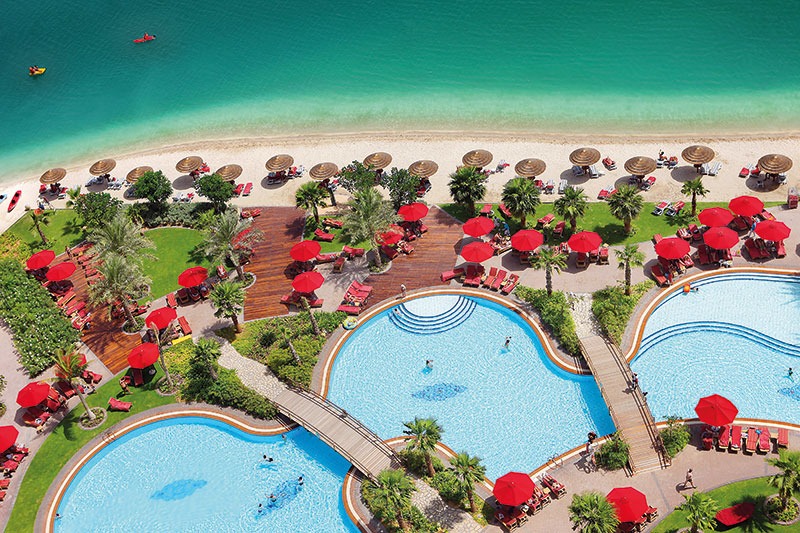Ali Manzoor, associate partner, Hospitality and Leisure, at Knight Frank, helps us draw the lines that illustrate Abu Dhabi’s hospitality scene
According to the Department of Culture and Tourism – Abu Dhabi (DCT) a record 4.8 million people stayed in the emirate’s 162 hotels and hotel apartments during 2017, a 10 percent increase year-on-year (y-o-y). Abu Dhabi enjoyed the strongest growth in the travel and tourism spending and GDP in the region, according to the World Travel and Tourism Council (WTTC), and was named the fastest-growing of all cities outside Asia over the past decade in the study. Despite these positive numbers, however, slower growth is expected for the next 10 years, with the oil crisis the reason behind this instability.
Oversupply on the horizon
While most were cautiously optimistic about the recovery of Abu Dhabi’s hospitality sector between 2012 and 2015, the spectre of forthcoming supply was always an area of concern for many analysts. These concerns were soon substantiated, as numerous supply deliveries over the following two years resulted in performance declines across the capital. This trend was further exacerbated by the fact that the wider market was being dragged down by economic uncertainty and declining corporate visitation. As a result, 2016 and 2017 were characterized by a widespread softening in performance across the capital, which was primarily attributable to a decline in achievable rates rather than occupancy levels. Indeed, despite the fact that visitation numbers were increasing over this period, the decline in average rates was substantial enough to offset any performance upside. This was partially attributable to the source of the demand growth; China was (and remains) the largest and fastest-growing inbound source market to the emirate of Abu Dhabi. Given the fact that much of this demand has price-sensitive attributes, many hotel operators felt that they could only compete with each other on rate.
Difficult hotel operating conditions
The hospitality team at Knight Frank has undertaken a substantial number of hotel valuations in Abu Dhabi in recent years, and, as such, has had sight on how hotels have been affected by market conditions in real time through annual valuations. What is clear is that many hotels have had a rigid cost structure, and, as a result, have not been able to react sufficiently to rapidly changing market conditions. In some cases, we have seen profitability ratios decline by over 20 percent in a span of just three years, and such situations have been a bitter pill to swallow for asset owners. While the first instinct of some is to cut payroll, most understand that doing so is a short-term solution; instead many are looking at alternative ways to drive revenue, or in some cases, to enhance efficiencies in utilities expense, which has been a subject of great interest in recent years.
New destinations to drive footfall
One shortcoming that Abu Dhabi has continuously had to deal with is the lack of credible demand generators, particularly those which are compelling enough to stimulate room-night demand from the leisure segment. Historically, visitors to the capital would be able to visit major sites in a single day, and beyond Yas Waterpark, Yas Arena and Sheikh Zayed Grand Mosque, there were few other attractions to visit. However, with the delivery of Yas Mall, the Louvre and the upcoming Warner Brothers Theme Park, properties are in a stronger position to convert these day trips into room-night demand.
The role of the national carrier
Etihad Airways is also an important conduit for the capital’s hospitality sector, and it is interesting to see new initiatives being carried out by the airline which are clearly designed to stimulate Abu Dhabi’s hospitality market. The offer of complimentary hotel accommodation for many passengers with a stopover in Abu Dhabi is a great initiative to reach potential guests who may not have previously considered the emirate as a tourist destination.
While we do appreciate that the market has a challenging operating environment, in the short-to-medium term, given the comparatively modest supply pipeline and various government initiatives, we believe that the long-term outlook is broadly positive.


















